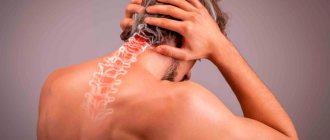Tremor is a movement disorder. From the outside it looks like small vibrations of certain parts of the body. Hand tremors are widespread - these involuntary movements greatly complicate the lives of patients, because they do not allow them to perform simple actions, and often even take care of themselves, although technically this condition does not cause a danger to life and does not shorten it. This problem is typical for people over 65 years of age, and the older the patient gets, the more it progresses. But this depends on the specific disease - often tremor, which arose under the influence of certain factors, also disappears after eliminating these same factors.
Varieties
Tremors can be of different types, but first let’s distinguish between primary and secondary. Primary, essential tremor occurs independently, and secondary - in the form of a reaction to various diseases, the administration, or the effect of certain medications.
You should also distinguish between physiological and pathological tremor. The first is considered normal and occurs in healthy people - for example, with severe anxiety. It is characterized by a small range of movements, as well as the ability on the part of the person himself to remove this state - simply to calm down.
Pathological is caused by various disorders in the nervous system. It is divided into a large number of different subtypes - for example, there is the so-called cerebellar variant.
It is necessary to highlight one more group of such disorders: motor and at rest. Moreover, motor tremors also come in several varieties. We won’t describe everything, but let’s give an example of kinetic - this is a tremor that is observed when trying to perform an action. If it is not targeted (conditionally, any), we are talking about a simple kinetic version of the state. When the action is purposeful (for example, the patient wants to take a cup), and the trembling itself intensifies as it approaches the goal, they speak of intention tremor.
Symptoms of limb tremor
As already mentioned, tremor of the upper and lower extremities can be a physiological or pathological manifestation. Physiological tremor goes away on its own after eliminating the irritating factors. Physiological tremor appears during stressful situations, physical activity, and the patient is bothered by trembling of the arms or legs. This condition does not last long and goes away when the person comes to a state of rest. This symptom is the body’s response to stress and goes away without the help of doctors or medications.
Pathological tremor of the limbs has a different amplitude, can last several weeks and is a symptom of a serious illness. In this case, tremor of the upper and lower extremities is most likely caused by serious pathological changes in the body.
According to its form, tremor of the upper extremities can be classified as small-spanning and large-spanning.
Tremor of the limbs can appear at rest, as well as during active movements. For example, when holding an object in front of you, straightening your arms, or performing small precise movements, the tremor of the limbs is especially pronounced. Also, prolonged muscle contraction increases the symptoms of tremors in the limbs. Tremor of the limbs in people who abuse alcohol manifests itself in the form of shaking, often in the morning, and goes away after a certain time. Some medications can also cause tremors in the limbs, which disappear after treatment ends.
In Parkinson's disease, the patient's tremor is observed at rest and stops when movements are resumed. Another type of limb tremor is the so-called “hereditary tremor”, which often appears in old age or infancy. Also, tremors of the limbs can occur with the development of cancer and tumors in the brain and cerebellum.
The manifestation of limb tremors is enhanced by factors such as alcohol abuse, strong coffee, psychological stress, the transition period and other disorders in the body.
Causes
There are many causes of hand tremors:
- Genetic factor (determines the essential form of the disease).
- Parkinson's disease.
- Some pathologies of the endocrine system.
- Metabolic disorders. For example, Wilson-Konovalov disease may be the cause.
- Cerebral vascular lesions are different types of strokes.
- Diseases due to infections. This includes epidemic encephalitis.
- Various space-occupying formations: from tumors to hematomas.
- Taking certain medications. The shaking effect is caused by some types of antidepressants and antipsychotics.
- Serious poisoning - carbon monoxide, salts of heavy metals.
- Withdrawal syndrome that occurs during withdrawal of a substance to which a person is dependent. These are drugs, alcohol, some strong medications.
These are not all factors - in the practice of doctors there are others that can cause tremors of the limbs.
Causes of limb tremors
Tremor of the limbs can be physiological or pathological. Physiological tremor is not very pronounced, less noticeable than pathological. It can occur against the background of severe psychological shocks, after physical exertion or after taking certain medications. Physiological tremor of the limbs disappears after the cessation of irritating factors. Pathological tremor of the limbs is a symptom of more severe diseases of the nervous system or brain cancer. Tremor of the upper and lower extremities can occur with the following diseases:
- Parkinson's disease;
- tumors (cancer) of the brain, cerebellum;
- severe nervous shocks;
- fright;
- circulatory disorders in the brain;
- atherosclerosis (due to circulatory problems);
- disruption of the thyroid gland;
- alcoholism;
- Minor's disease;
- Wilson-Konovalov disease;
- liver, kidney failure;
- intoxication of the body.
Depending on the severity of the disease, the frequency and amplitude of limb tremors may vary. If such symptoms are ignored, the consequences can be extremely severe and pose a threat to human life. Therefore, at the first signs of limb tremors, you should immediately contact an experienced specialist.
Diagnostics
Determining the problem itself is quite simple - this can be done as a result of a survey, as well as during a routine examination of the patient, using simple experiments. Another thing is that it is important for specialists what exactly underlies such a reaction of the body. Here it is necessary to exclude diseases that may be dangerous for the patient.
Diagnostics necessary for subsequent treatment of hand tremor include:
- Laboratory tests: general, hormones, calcium, glucose and a number of other substances. Also, with the help of tests, you can determine whether the tremor is associated with alcohol, drug intoxication or withdrawal syndrome. For a more complete picture, both blood and urine are examined.
- MRI of the brain. The examination may show ischemic or atrophic lesions, as well as other problems.
- Computer stabilography. This technique, using a variety of tests and a special apparatus, allows us to understand more accurate characteristics of the deviation.
A number of other studies are also carried out: tremorometry, electromyography, angiography. In some cases, molecular genetic tests are required. The specific diagnosis will depend on the situation: the patient’s condition, age, completeness of information about his diseases, etc. Different people may require completely different examinations.
Treatment of limb tremor
To effectively treat tremor of the upper and lower extremities, the cause of the symptom must be correctly diagnosed. The key to successful treatment is contacting an experienced specialist. At the Yusupov Hospital, highly qualified specialists provide an integrated approach to treatment.
Doctors at the Yusupov Hospital conduct diagnostics using modern European-quality equipment and perform tests of any complexity. For each patient, doctors develop a separate therapeutic complex. The team of doctors at the Yusupov Hospital have the title of Doctor of Science, doctors of the highest category, who regularly undergo advanced training and specialize in diseases of the nervous and cardiovascular systems, and neurology. The use of modern evidence-based treatment methods helps to achieve maximum results in the treatment of a wide range of neurological diseases and more.
The Yusupov Hospital accepts patients, even in the most serious condition, who were rejected by other clinics. You can make an appointment with a doctor by calling the Yusupov Hospital or using the feedback form on the website.
Treatment
If the cause that underlies the disease is removable, treatment of tremor begins with this. Then conservative therapy comes into play, which includes:
- Improving quality of life by changing habits and environment. Patients need to avoid stress and also surround themselves with more comfortable and safe things. For example, knives should have dull edges so that a person cannot hurt himself. If a person is often left alone at home, an emergency phone should have voice control.
- Exercise therapy, massages, and additional treatment options such as reflexology. Also, many patients are recommended to use special braces that are attached to the wrists and make movements more rigid and limited.
- The use of various medications, which are selected exclusively by a doctor after a thorough diagnosis. Under no circumstances should you prescribe something for yourself.
If conservative methods do not help, patients are offered surgical intervention. This is relevant in the case when tremor can make a person disabled. Then, during the operation, special electrodes are implanted into the body - by influencing the brain with special impulses, they help to align movements.
If you want to cure hand tremors or get detailed advice on this issue, neurologists at the Meditsina JSC clinic in Moscow are ready to see you at a convenient time and provide professional assistance.
Hand trembling: possible causes
You, of course, have come across the expression “shaking in the veins.” This is usually said about a very frightened person. The “hamstrings” in this case are the tendons and ligaments of the knee joints. This apt definition is given by the people to the condition when the legs begin to tremble from fear or strong anger. But what if, even in the normal state, your arms and legs shake or something like a “chill” shakes your body? Should I urgently go to the doctor or try to change my lifestyle?
Thrill of passion or nervous trembling?
Ophelia: - Good God! I'm trembling with fear!
Polonius: - Why? The Lord is with you!
Ophelia: - I sewed. Hamlet enters, without a hat, a sleeveless shirt in half, Stockings up to his heels, stained, without garters, Shaking so much that you can hear Knee knocking on Knee, so confused, As if he were in hell and came running to talk about the horrors of Gehenna.
Polonius: - Are you mad with passion?
Ophelia: - I won’t tell, but I’m afraid.
We live in a very difficult time, full of worries and stressful situations. Increasingly, when visiting a neurologist, patients complain that they cannot cope with their emotions, suffer from insomnia, irritability, fatigue and decreased performance. They even learned a new word: “I’m depressed, doctor.” More and more patients are complaining of hand tremors. People ask what can be done about it. And, of course, in each individual case the doctor’s answer will be different. Let's try to figure out the reasons together.
Tremor. Causes
Tremor. Doctors use this short word to describe trembling in any part of the body (local tremor) or throughout the body (generalized). To quickly check whether your hands are shaking, just stretch them out in front of you, palms down, placing one sheet of paper on your hands; relax your fingers and tense them, and then drop your hands onto your knees and finally completely relax your fingers, as if you were grasping a ping-pong ball.
Believe me, a significant number of people do not pay attention to this, sometimes very dangerous symptom of severe neurological diseases! Therefore, as a doctor, I ask you to check your children and elderly parents, who for some reason try for a particularly long time to “not notice” the obvious.
Depending on the origin, there are two types of tremor: physiological and pathological.
Physiological tremor
– occurs periodically in all people, most often manifests itself in the hands when stretched in front of oneself. Increased physiological tremor (“tremor of tired muscles”) appears after active loads on the muscles, with strong excitement, emotions - this is normal.
An overly emotional person may experience hand tremors almost constantly. However, as soon as the person calms down, the tremor noticeably decreases and sometimes disappears completely. But a new emotional experience can again lead to the appearance of trembling.
Sometimes depression or strong emotions can manifest themselves as such an uncontrollable “chill-like” tremor of the whole body that the person literally “stabs.” But this condition passes. Therefore, doctors advise not to treat tremor that appears during severe fatigue, emotional stress or severe anxiety, but only observe it.











